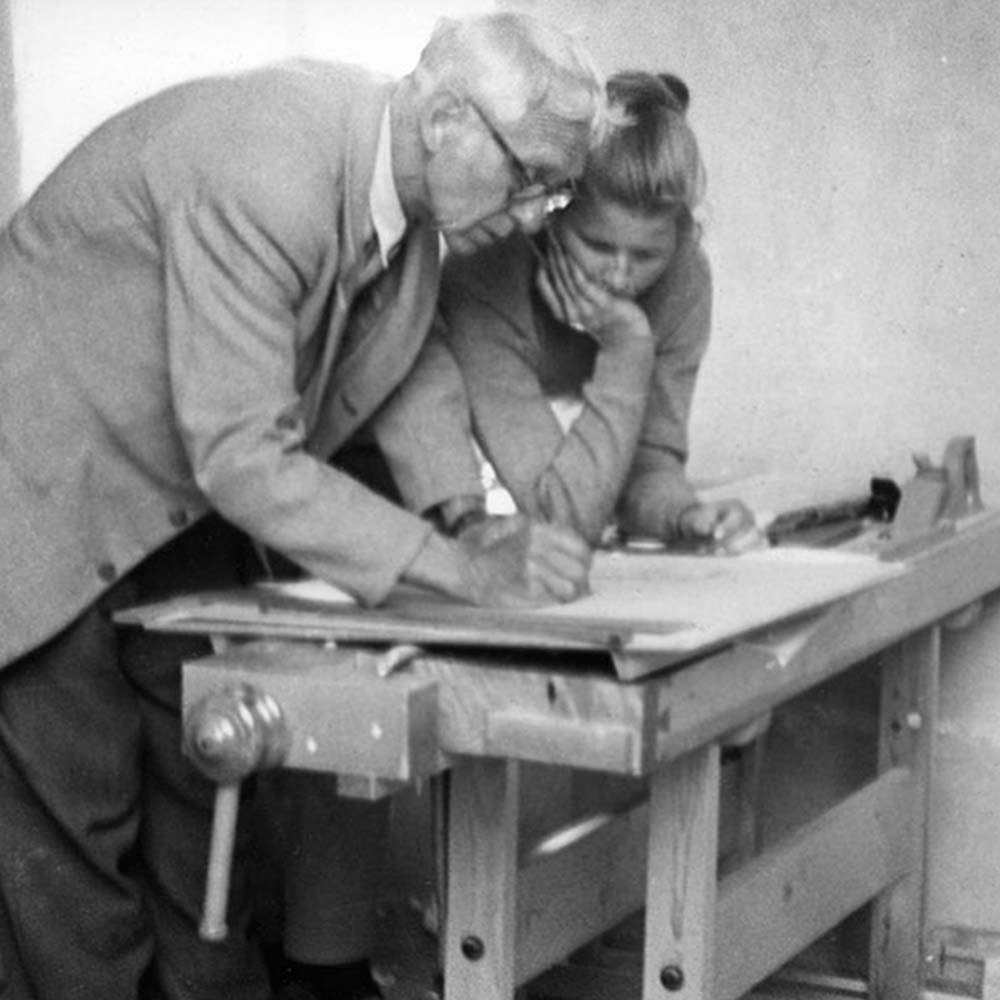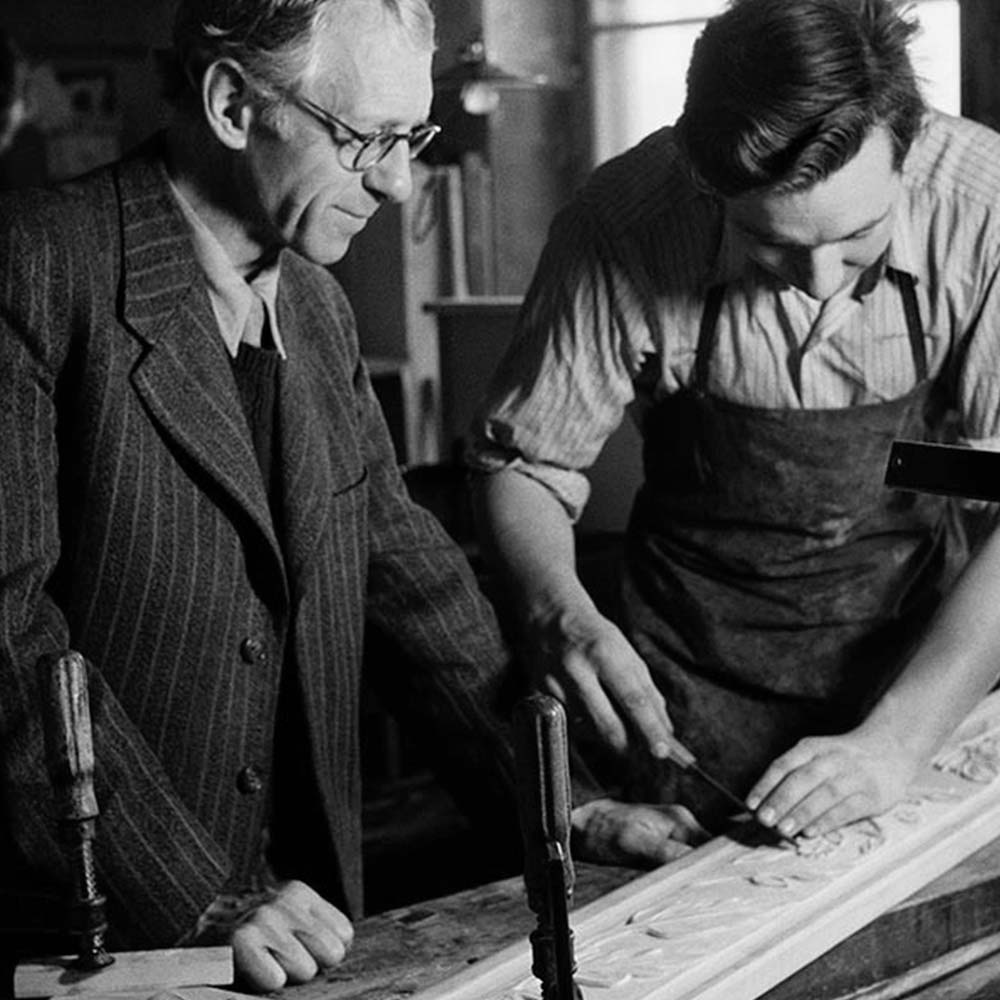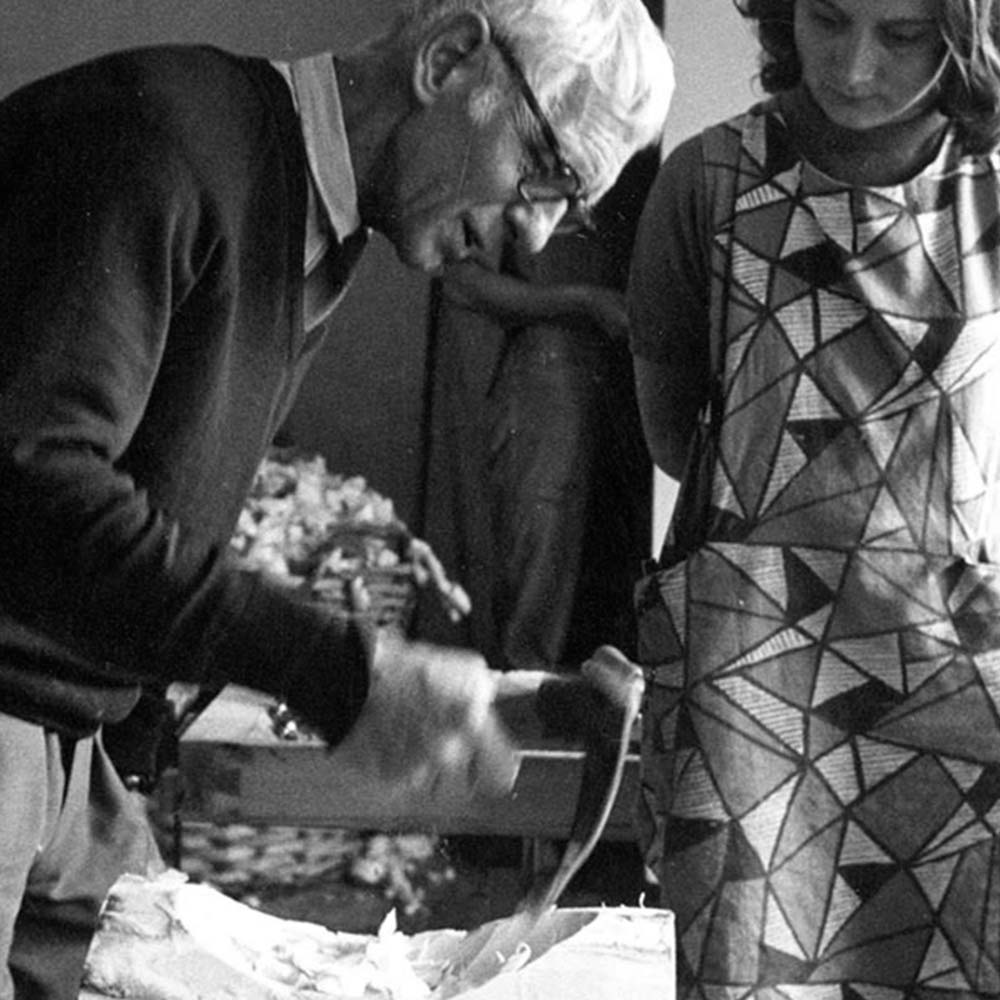
Carl Malmsten was born in 1888 into the upper strata of bourgeois society. His paternal grandfather was personal physician to the royal family and his maternal grandfather, Regis Cadier, founded the Grand Hotel in Stockholm. Tastes in furniture at the time were marked by excessive extravagance and it was this that Carl would later come to rebel against.

Carl did not enjoy school and preferred to work with his hands. The story goes that when he was about to take his graduation exams, he had gotten so fed up with school that he asked the headmaster if he could leave. The headmaster contacted his father, who sent two guards to fetch his son. He was then thrown into a cell at the Katarina Mental Asylum, where he was made to take the exams. In protest, he never once put on his student cap.

During a trip to Egypt he discovered his talent for drawing.While there he realised that it’s the long and dark winter nights lasting for half a year that explain why we northerners are so interested in our homes. On his return to Sweden, he found, quite by chance, a position in a carpentry workshop. He felt at home there and afterwards described himself as ‘a carpenter’s apprentice who had strayed from the upper classes’.

He wanted to benefit from industrial production without jeopardising craftsmanship and quality. He selected a number of highly qualified, artisanal workshops that would meet his demands, which he called the ‘Key Workshops’. These were to produce furniture for royalty, which in turn would finance his impending schools project. Carl Malmsten now embarked on cooperation with O.H. Sjögren, who then started to produce his upholstered furniture. Together with O.H. Sjögren and the ‘Key Workshops’, he created the furniture that, through its timeless design, has achieved the status of Scandinavian furniture classics. These are the ones we recognise from their characteristic and evocative names, such as Farmor (‘Grandmother’), Hemmakväll (‘Evening at Home’) and Samsas (‘Side by Side’).

Carl Malmsten was an eccentric and strong-willed person who placed high demands on those around him. He has been aptly described as ‘someone from out of a newsreel from the 1950s - a primary school teacher at a handicrafts camp, in golf trousers and an undersized jacket with leather-patched sleeves and a sheathed knife in his belt’.

Carl Malmsten was a pedagogue as well as a designer, and he wanted to see his philosophy realised in the form of something from his planned schools project. The results of this work today are Carl Malmsten - Furniture Studies at Lidingö and Capellagården at Öland. In 1936 he received the title of Professor from the King.